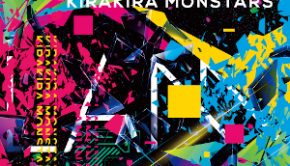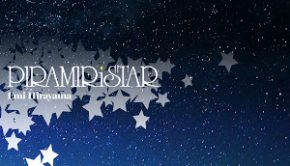SOULCALIBUR VI ORIGINAL SOUNDTRACK
 |
Album Title: SOULCALIBUR VI ORIGINAL SOUNDTRACK |
| Record Label: Sweep Record |
|
| Catalog No.: SRIN-1161 |
|
| Release Date: July 27, 2019 |
|
| Purchase: Buy at Sweep Record |
Overview
The SOULCALIBUR VI ORIGINAL SOUNDTRACK accompanies the latest in Namco Bandai’s fighting series. Featuring the work of many members of the BNSI sound team, as well as music from Yukihiro Jindo, known for his work on various Falcom titles, it’s another orchestral epic that serves as the background of history. How does this latest entry in the series turn out?
Body
The album opens with “The Brave New Stage of History,” an adventurous and heroic orchestral tune by Junichi Nakatsuru, with a nice melody that sets the stage for what is to come for the rest of the album. Other contributions from Nakatsuru also lean on this sound with “Standing Against the Storm,” an upbeat tune that is brass and strings forward. The melody itself is invigorating and there are some softer sections that work to break the tension. “Under a Pledge” is standard Soul Calibur fare, with a heroic and honorable sound accented by choir while “Chaos Eclipse” brings a more foreboding and tense atmosphere to the tune with its heavy use of brass and percussion, in addition to strings, that help bring to life a haunting melody.
Yu Sugimoto’s sole contribution is “Myriad Souls,” an orchestral tune with piano, strings, and choir, that is intense, dramatic, and a bit cacophonous. It’s a decent contribution to the album. Yoshihito Yano’s contributions are all rather different. “Undying Legend” leans on the more flamboyant side, reminiscent of former Namco composer Go Shiina, with vibrant strings, brass, a fun melody, and exhilarating percussion. “Diabolous Amalgam” is intense and dark dominated by brass and strings. The melody is hauntingly beautiful, particularly during the more strings forward sections of the piece. The organ section helps solidify this haunting sound. The end result is bit mischievous, but is an excellent addition to the soundtrack. lastly, “Who Dare to Tread” has an Egyptian/Middle Eastern influence with its swelling strings and lovely percussion work all supporting an uplifting melody.
Syuri Misaki contributes a fair amount of stage themes as well. “Darkest Shadow” is a brass and strings forward tune that carries with it the typical Soul Calibur sound. The B section, in particularly, is fantastic with the combination of organ, harp, and choir leading to an exquisite atmosphere. “Following the Wind Trail” is an adventurous orchestral tune that captures the sound of the series, but isn’t as memorable while “The Lionhearted” is more brass forward initially, lending an adventurous tone to the piece, before transitioning to a softer melody in the second half of the piece. A personal favorite is “Moon of Oblivion,” a slower tempo tune that captures an adventurous tone, but also an enthralling one. The solo violin lead is evocative and is backed by percussion and strings. It’s a soft and elegant piece but has its moments of oomph. Lastly, “Fortune Favors the Brave” is an intense orchestral tune with brass and percussion hits accompanying a flurry of strings. It’s another piece where the solo violin shines and the end result, with its invigorating melody, is wonderful.
The contributions on the soundtrack that are the most different belong to Rio Hamamoto. With his entries, there is certainly a more electronic influence in the orchestral tunes, reminiscent of his work on Tekken 7, but at the same time, they fit extremely well within the universe of Soul Calibur. “Deadland Call” is a super intense tune with choir, strings, brass, percussion, and distorted electronics. The melody is quite strong and the piece takes on a film-like quality. The end result is quite wonderful, but is one of the weaker contributions from Hamamoto. On the other hand, “Lineage of Destiny” is absolutely exquisite. The organ and piano work is top touch while the electronic distortion and guitar riffs amidst the orchestra gives it more of a presence. The choral aspects of the piece are haunting and the overall piece has a Gothic influence. It’s such a different tune for the series but one that is, in my opinion, very welcome. “The Evil Flame” continues with the Tekken 7 influence, blending distorted electronic elements with intense percussion, choir, and a brass melody that is super powerful. The strings and piano and accompaniment are exquisite and give off a Classical influence with the piano bridge, in particular, being superb.
Another excellent tune by Hamamoto is “Doomsday,” an intense and powerful tune opening with a solo violin, choir, heavy percussion, and electronic elements. The melody itself is quite elegant and haunting on the solo violin and the piano accompaniment further strengthens this. It’s a dramatic tune for sure, would fit right into the Tekken universe, and is also beautiful behind all its might. Lastly, “The Nameless Ordeal” is another fine addition by Hamamoto. It’s a dramatic tune, also sharing many of the elements of his Tekken 7 work, with choir, strings, percussion supporting a brass and piano focus. The end result is heroic and intense while the B section boasts a expressive and more delicate atmosphere being crescendoing into a more epic feel while incorporating aspects of “Doomsday.”
The majority of the soundtrack, however, belongs to contributions by Yukihiro Jindo, providing many of the cutscene music for the game, as well as some more story mode related tunes. All are of the orchestral variety and while they may not stand out as well as some of the more distinctive tunes, there are still plenty of wonderful tunes to be heard. “The Chronicle of Souls” has a film-like quality to it, with a marching percussion, and a brass and strings forward melody while “In Full Bloom” carries with it a more Japanese aesthetic with its incorporation of traditional Japanese instruments. “A Zealous Herald” brings with it a more sinister sound with a mischievous strings melody and ominous brass. Likewise, “Crux of Evil,” with its organ and strings gives off a cliched villainous sound, but the melody is quite nice. “Destiny in Flux” has three renditions. The first has a cinematic quality to it with a beautiful brass and strings melody supported by woodwinds and percussion. “Destiny in Flux: Steel Echo” is more choral forward and somber with strings, bell tolls, and a more ethereal atmosphere while “Destiny in Flux: Deep Reflection” is poignant with a solo violin melody and an accompaniment similar to “Destiny in Flux” proper. There is also a Celtic influence with the bagpipes that helps differentiate it from the others. Lastly, “Healing Winds: Reminiscences,” closes the soundtrack with its warm strings melody and brass accompaniment.
Summary
The SOULCALIBURVI ORIGINAL SOUNDTRACK is another fantastic entry in the series music. While handled mostly by BNSI in-house, the addition of Yukihiro Jindo to handle a majority of the cinematic work helps bring a new perspective on the Soul Calibur universe. Fans of the series’ music will certainly enjoy the new entries heard within this soundtrack and for those of you who may only know one or two composers, it’s worth looking into, at the very least!
Do you agree with the review and score? Let us know in the comments below!
4
Posted on October 22, 2019 by Don Kotowski. Last modified on October 22, 2019.














